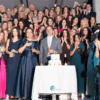
Chara Oraiopoulou BSc, MRes, Biologist, Senior Clinical Embryologist, ESHRE cert.
Misdiagnosis associated with biopsy techniques is under investigation since PGT-A treatments have been performed routinely. Moreover, as trophectoderm biopsy is the dominant standardized method in PGT-A, non-invasive methods quest for validation through next-generation sequencing (NGS) analysis. Hence, confirming that biopsy techniques do not induce artefacts is not only crucial for the accuracy of the sequencing results, but also provides a solid ground for the rapidly evolving non-invasive technologies. By now, limited studies have been published, with contradictory results concerning artefactual mosaicism, while there is no published data concerning the effect of biopsy techniques on embryos’ implantation potential.
A prospective study was conducted in Embryolab Fertility Clinic, Greece, from April 2021 to November 2022, including 112 PGT-A cycles, with 502 biopsied blastocysts. In total, 44 embryo transfers were performed, all with euploid frozen/warmed embryos, with mean women age 38.8 (+4) years old. The 77.5% of 502 biopsied blastocysts was ranked as top-quality embryos (grade 4-6, AA/AB/BA, according to Gardner’s system). The occurrence of mosaicism was statistically analyzed in relation to a) the method of cell-cluster detachment –pulling/flicking-, b) the number of laser pulses per embryo, c) the number of harvested cells (group I: 2-5 cells, group II: 6-9 cells). Additionally, the implantation rate was assessed according to the method of cell-cluster detachment during biopsy (pulling/flicking).
Although there was a trend for higher percentage of mosaicism with the pulling method (12.4%, 37/298) compared to flicking (9.3%, 19/204), the difference was not statistically significant. Similarly, the number of laser pulses did not seem to influence the occurrence of mosaicism, while the number of harvested cells did not lead to mosaic prevalence in any subgroup (group I: 10.3%, 37/360 – group II: 13.4%, 19/142). Interestingly, the implantation rate of embryos biopsied by pulling was 42.3% (11/26), while embryos biopsied by flicking reached 52% (13/25), with no significant difference though.
According to our study, no specific biopsy technique can jeopardize either the accuracy of the results or the implantation potential, as long as standardized procedures are followed. Thus, the technique of trophectoderm biopsy should be adjusted to each blastocyst, according to the embryo’s morphology, opting for minimal embryo handling.





